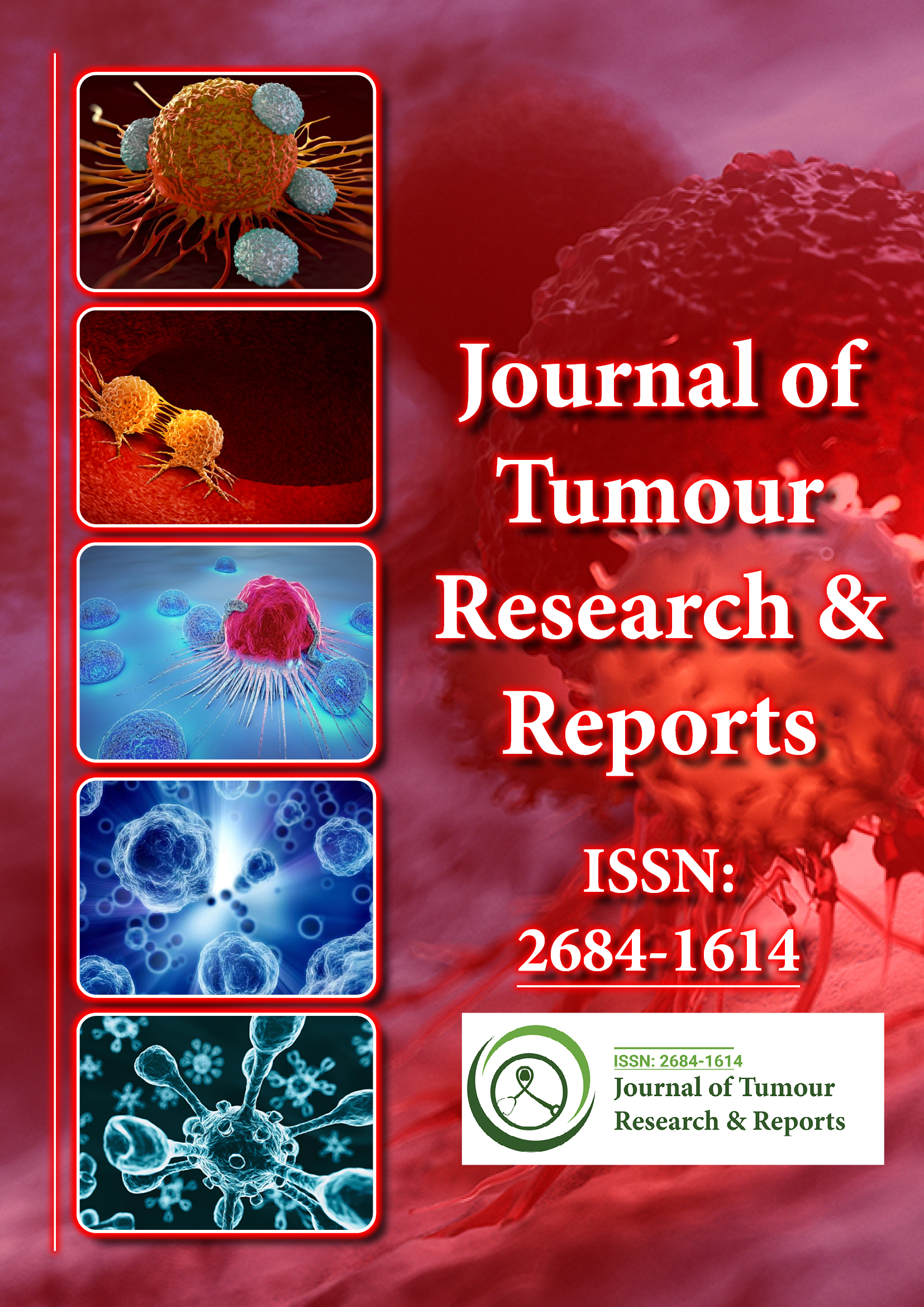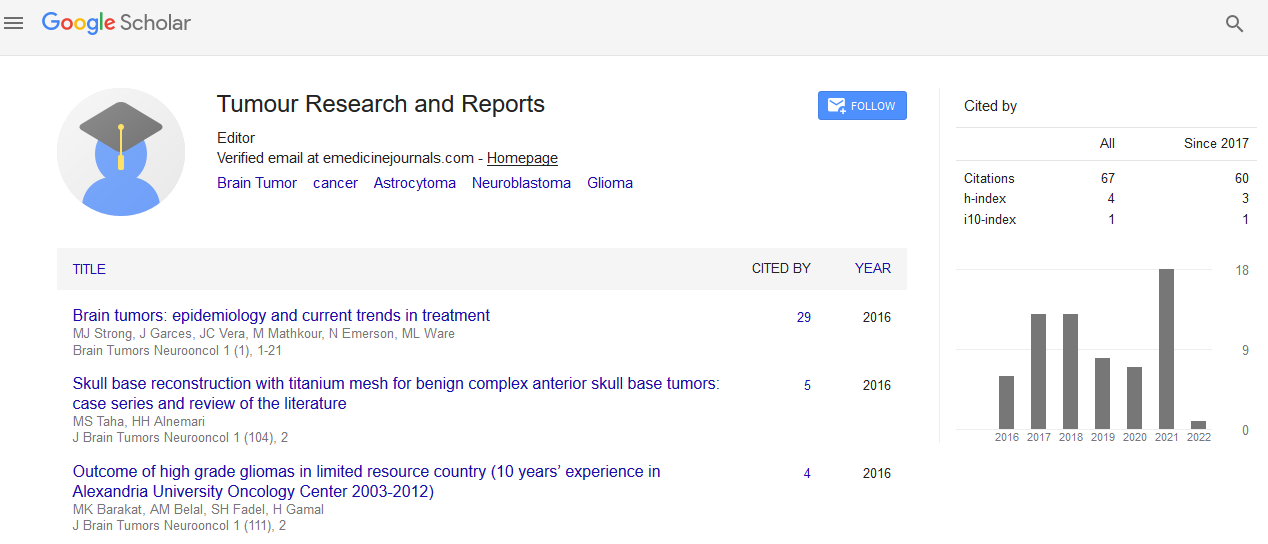Indexed In
- RefSeek
- Hamdard University
- EBSCO A-Z
- Google Scholar
Useful Links
Share This Page
Journal Flyer

Open Access Journals
- Agri and Aquaculture
- Biochemistry
- Bioinformatics & Systems Biology
- Business & Management
- Chemistry
- Clinical Sciences
- Engineering
- Food & Nutrition
- General Science
- Genetics & Molecular Biology
- Immunology & Microbiology
- Medical Sciences
- Neuroscience & Psychology
- Nursing & Health Care
- Pharmaceutical Sciences
Commentary - (2025) Volume 10, Issue 1
Emerging Role of Ferroptosis in Triple-Negative Breast Cancer: A New Therapeutic
Elina Wozniak*Received: 03-Mar-2025, Manuscript No. JTRR-25-29013; Editor assigned: 05-Mar-2025, Pre QC No. JTRR-25-29013 (PQ); Reviewed: 19-Mar-2025, QC No. JTRR-25-29013; Revised: 26-Mar-2025, Manuscript No. JTRR-25-29013 (R); Published: 02-Apr-2025, DOI: 10.35248/2684-1614.25.10.244
Description
Triple-Negative Breast Cancer (TNBC) is one of the most aggressive subtypes of breast cancer and is known for its poor prognosis due to the absence of estrogen receptor, progesterone receptor, and HER2 expression. These tumors account for 15%-20% of all breast cancers and pose significant challenges in treatment due to the lack of targeted therapies. Chemotherapy remains the mainstay of treatment, but resistance and recurrence are common. Recent advances in molecular oncology have shed light on ferroptosis, a regulated form of cell death characterized by iron-dependent lipid peroxidation, as a potential vulnerability in TNBC.
Ferroptosis has garnered attention for its distinct mechanisms compared to apoptosis, necrosis, and autophagy. Unlike these classical forms of cell death, ferroptosis is driven by the accumulation of lethal lipid reactive oxygen species, typically through the inhibition of the cystine/glutamate antiporter system (system Xc) or depletion of Glutathione Peroxidase 4 (GPX4). These discoveries have opened up avenues for exploring ferroptosis in the context of drug-resistant and refractory tumors.
In TNBC, preclinical models have demonstrated a heightened sensitivity to ferroptosis-inducing agents. This susceptibility is believed to stem from the unique metabolic dependencies and redox imbalances of TNBC cells. For instance, studies have shown that the mesenchymal-like subtypes of TNBC exhibit a ferroptosis-prone phenotype due to low GPX4 expression and high intracellular iron levels. Furthermore, the oncogenic signaling pathways often altered in TNBC, such as KRAS and TP53, modulate key regulators of ferroptosis, rendering these cells even more vulnerable to ferroptotic stress.
One of the most promising aspects of ferroptosis induction in TNBC lies in its potential synergy with existing chemotherapies. Agents such as cisplatin and doxorubicin have been shown to sensitize tumor cells to ferroptosis when used in combination with GPX4 inhibitors like RSL3. Additionally, system Xc− inhibitors such as erastin have demonstrated potential in preclinical models, effectively overcoming resistance mechanisms and enhancing tumor regression.
Several natural compounds and FDA-approved drugs have also emerged as ferroptosis modulators. Sulfasalazine, a drug used in inflammatory bowel disease, inhibits system Xc and has shown activity in TNBC cell lines. Moreover, the diabetes drug metformin, known to activate AMPK and inhibit mTOR, indirectly affects ferroptosis pathways and could be repurposed for TNBC treatment. This repositioning strategy not only expedites clinical translation but also lowers the economic burden associated with drug development.
The Tumor Microenvironment (TME) adds another layer of complexity to ferroptosis induction in TNBC. Hypoxia, immune cell infiltration, and metabolic heterogeneity influence the ferroptotic threshold of cancer cells. For instance, the lipid composition of the TME can either facilitate or impede lipid peroxidation depending on the abundance of polyunsaturated fatty acids. Additionally, immune cells such as T cells can release interferon-gamma, which downregulates SLC7A11 (a component of system Xc), thereby promoting ferroptosis in cancer cells. Harnessing the interplay between the immune system and ferroptosis could therefore offer dual therapeutic benefits.
Despite these promising findings, clinical translation of ferroptosis-based therapies in TNBC is still in its infancy. Biomarkers for patient stratification and real-time monitoring of ferroptosis are urgently needed. Lipid peroxidation byproducts such as 4-Hydroxynonenal (4-HNE) and Malondialdehyde (MDA) are being explored, but lack specificity. Advanced imaging techniques and the development of ferroptosis-specific radiotracers may provide breakthroughs in this area.
Moreover, the safety profile of ferroptosis inducers must be carefully evaluated. Since ferroptosis is not exclusive to cancer cells, off-target effects on normal tissues rich in polyunsaturated lipids, such as the brain and kidney, pose significant concerns. Controlled delivery systems, such as nanoparticle-based formulations or tumor-specific promoters in gene therapy J Tum Res Reports, Vol.10 Iss.1 No:1000244 2 approaches, are under investigation to enhance the selectivity of ferroptosis-inducing treatments.
Citation: Wozniak E (2025). Emerging Role of Ferroptosis in Triple-Negative Breast Cancer: A New Therapeutic Avenue. J Tum Res Reports. 10:244.
Copyright: © 2025 Wozniak E. This is an open-access article distributed under the terms of the Creative Commons Attribution License, which permits unrestricted use, distribution, and reproduction in any medium, provided the original author and source are credited.

